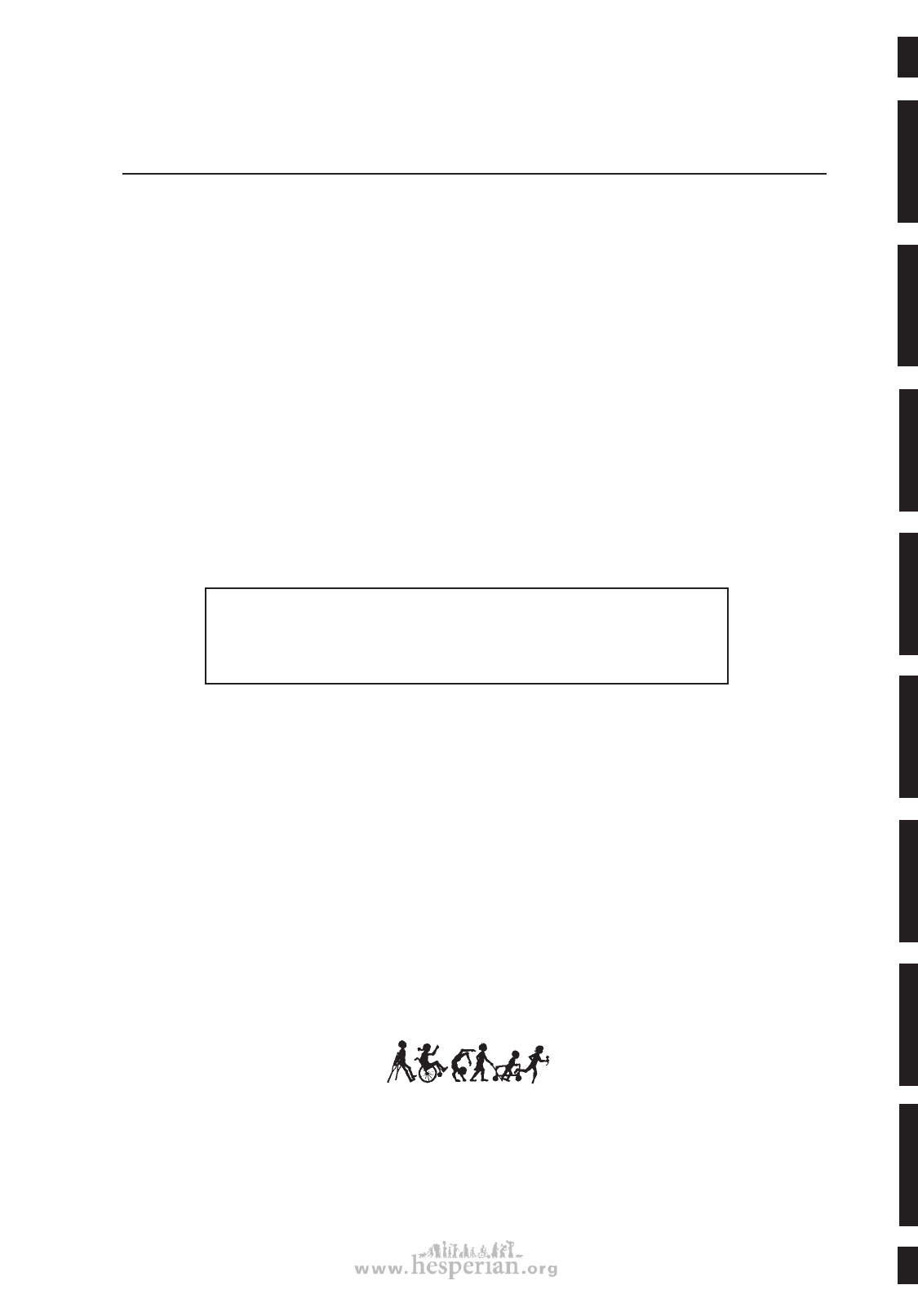
Guide for
Identifying Disabilities
6CHAPTER
51
This chapter has a chart, 7 pages long, to help you find out what disability a child
possibly has, and where to look up that disability in this book.
In the first column of the chart, we list the more noticeable signs of different disabilities.
Some of these signs are found in more than one disability. So in the second column we
add other signs that can help you tell apart similar disabilities. The third column names the
disability or disabilities that are most likely to have these signs. And the fourth column gives
the page numbers where you should look in this book. (Where it says WTND and then a
number, this refers to the page in Where There Is No Doctor.)
If you do not find the sign you are looking for in the first column, look for another sign. Or
check the signs in the second column.
This chart will help you find out which disabilities a child might have. It is wise to look up
each possibility. The first page of each chapter on a disability describes the signs in more
detail.
IMPORTANT: Some disabilities can easily be confused. Others are
not included in this book. When you are not sure, try to get help
from someone with more experience. At times, special tests or
X-rays may be needed to be sure what the problem is.
Fortunately, it is not always necessary to know exactly what disability a child has. For
example, if a child has developed weakness in his legs and you are not sure of the cause, you
can still do a lot to help him. Read the chapters on disabilities that cause similar weakness,
and the chapters on other problems that the child may have. For this child, you might find
useful information in the chapters on polio, contractures, exercises, braces, walking aids or
wheelchairs, and many others.
Sometimes it is important to identify the specific disability. Some disabilities require
specific medicines or foods—for example, night blindness, rickets, or hypothyroidism. Others
urgently need surgery—for example, spina bifida or cleft lip and palate. Others require special
ways of doing therapy or exercises—for example, cerebral palsy. And others need specific
precautions to avoid additional problems—for example, spinal cord injury and leprosy. For
this reason, it helps to learn as much about the disability as you can. Whenever possible,
seek information and advice from more experienced persons. (However, even experts are
not always right. Do not follow anyone’s advice without understanding the reasons for doing
something, and considering if and why the advice applies to the individual child.)
In addition to this chart, 2 other guides for identifying disabilities are in this book:
GUIDE FOR IDENTIFYING CAUSES OF JOINT PAIN, p. 130.
GUIDE FOR IDENTIFYING AND TREATING DIFFERENT FORMS OF SEIZURES
(EPILEPSY), p. 240.